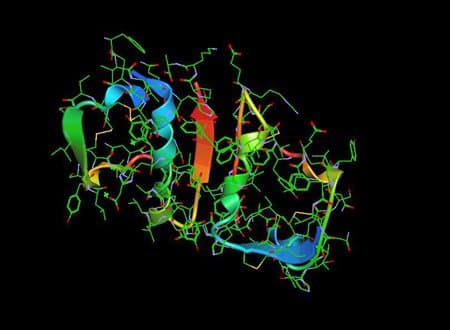The structure of insulin is composed of two short amino acid chains linked by two disulfide bonds.
What is an amino acid chain?
Amino acids are structural units that bond together to form proteins. They are chemical units used by the human body to perform certain functions such as muscle-building and the regulation of bodily functions.
These amino acid units bond to form short chains called peptides or longer chains called polypeptides. The term “polypeptides” refers to what we commonly call proteins. Peptides or polypeptides (proteins) are simply chains of amino acids linked together end-to-end. When we eat protein, the body breaks proteins down into amino acids so we can use them.
Insulin amino acid chains
Insulin has two of these amino acid chains. In most types of insulin, the first chain has 21 amino acids and the second has 30—though this can differ.
Disulfide bonds
The above chains often connect to form more complex proteins than simply long amino acid chains. These connected protein chains have what are called tertiary or quaternary structures; put simply, the amino acid chains connect with one another to form more complex protein structures. Their more complex structure enables them to perform different functions. In insulin, there are three disulphide bonds between the two chains.
It is disulphide bonds that connect these protein chains together. Understanding what disulphide bonds are chemically involves a fairly deep grasp of organic chemistry. However, in understanding the structure of insulin, it is enough to know that they are the links or bridges between the amino acid chains enabling insulin molecules to be formed. They are an important part of biochemistry.
What does this mean for the structure of insulin?
Insulin is a protein with a binary structure. That means it has two protein chains connected together by disulphide bonds. There are differences between different types of insulin. For example, the length of the amino acid chains can differ, and other linkages such as hydrogen bonding can form between the chains as well as the disulphide bonds.
However, all types of insulin share similar structural features. They all have two amino acid chains, all have three disulphide bonds and all have the three disulphide bonds in the same position. It is these similarities that enable insulin from different animals to be used in modern medicine.


